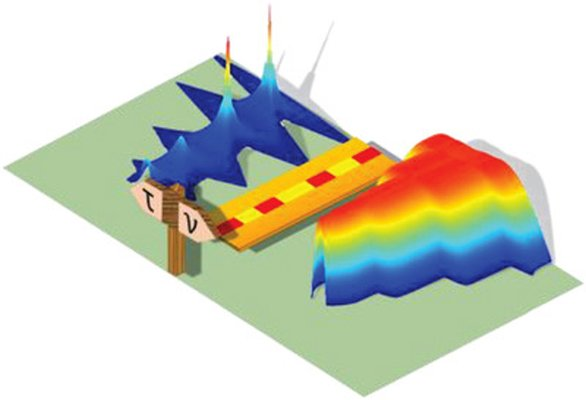Jun 15 2020
Researchers have created what is called a “supercontinuum”—an extensive range of colors—from a narrow laser bundle that is attractive. For instance, in a self-driving car, a supercontinuum enables object recognition with the help of a LIDAR system.
 By sending the laser light through a combination of materials (indicated red and yellow rectangles), laser pulse duration and bandwidth are influenced alternately. By doing so, the peak power of the laser is guaranteed, and no excessively high power is needed. Image Credit: University of Twente.
By sending the laser light through a combination of materials (indicated red and yellow rectangles), laser pulse duration and bandwidth are influenced alternately. By doing so, the peak power of the laser is guaranteed, and no excessively high power is needed. Image Credit: University of Twente.
However, a majority of the methods for making a supercontinuum involve challenges. These challenges cannot be resolved just by maximizing laser power. Currently, researchers from the University of Twente (UT) have developed a method that prevents the loss of the laser’s maximum power. Thus, the color range is extended gradually. The paper discussing this study was published in the Laser & Photonics Reviews journal.
The thought of a laser would make one envision a package of highly focused light of one color; a majority of the people will think of red light. Is it possible to turn this into an extensive range of colors? This is the difficult field of nonlinear optics.
It sounds a little conflicting as if one turns the “sharpness” of a laser into an extensive range. However, the availability of an extensive range of colors, at higher intensities, has several benefits as well. In the field of medical research, the constituents of a sample (“soft X-Ray”) can be examined.
In LIDAR (laser imaging detection and ranging), the technology employed in future self-driving cars, several obstacles can be identified over an extensive range of distances as a result of its range of colors.
Stagnation
The issue faced until now is the requirement of laser power. Scientists at UT have discovered a solution to this challenge. They have demonstrated good outcomes by utilizing minimal laser power and without the need for valuable lasers or materials.
The primary issue is that the performance of the laser gets affected. Since the laser pulse takes quite a long time, the actual laser power reduces, and further widening of the bandwidth is blocked. Hence, pumping more laser power into it could result in damage to the material or even the explosion of an optical waveguide structure.
Two Materials
Therefore, the UT scientists in turn send the laser light via two kinds of materials. The “regular” material will expand the spectrum and the second material will offer the laser some time to retrieve and reach its maximum power once more. Thus, the researchers developed a supercontinuum that is highly efficient and stable.
The study was performed in the Laser Physics and Nonlinear Optics group of Professor Klaus Boller. The group is part of the MESA+ Institute of the University of Twente. The team worked with collaborators of the Optical Technology Group of the University of Münster, which is one of UT’s international partners.
Journal Reference:
Zia, H., et al. (2020) Supercontinuum Generation in Media with Sign-Alternated Dispersion. Laser and Photonics Reviews. doi.org/10.1002/lpor.202000031.